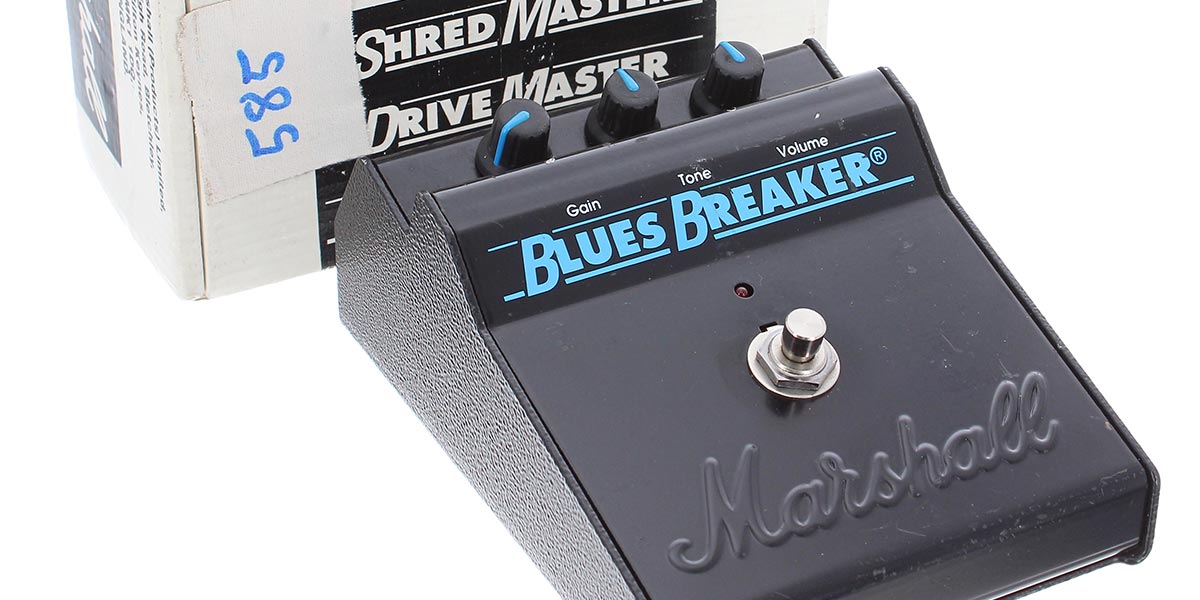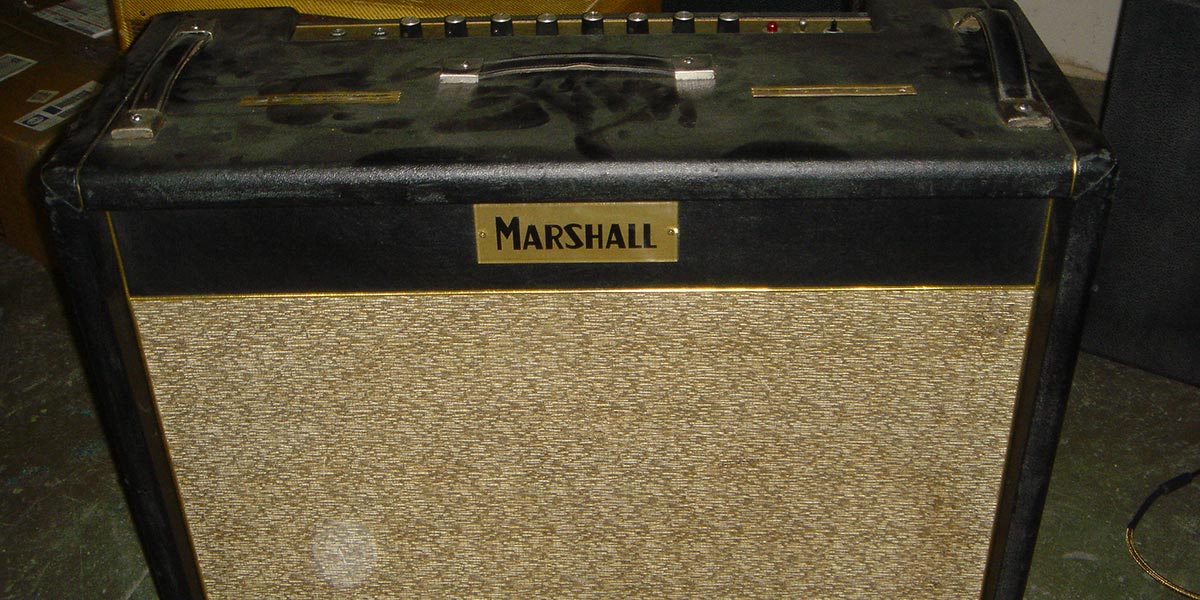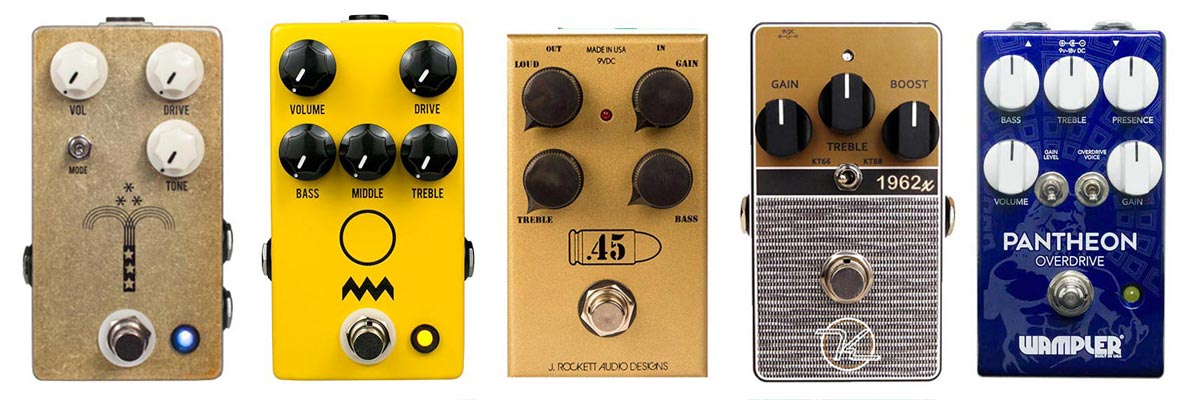
Marshall Blues Breaker pedal is an effects pedal that may not be at the top of everyone’s wish list, but that’s a shame. Why? It was the basis of many popular effects pedals.
It all started in the 60’s
Sometime in late 1964 or early 1965, Marshall made the first version of the Model 1962, which later became known as the Marshall Bluesbreaker. The amplifier was available in two variants, a 4 x 10 version (model 1961) and a 2 x 12 version (model 1962). Both amps sold for around £110 at the time, significantly cheaper than the Vox AC30 and Fender Bassman, the main competitors at the time.
Eric Clapton was at the heart of the amplifier’s success
The amplifier remained virtually unchanged until August 1965, when a second version was released. The amp wouldn’t really become famous until 1966 when Eric Clapton used one on the recording of John Mayall’s iconic Bluesbreakers album. Despite the success of this amplifier, production stopped in 1972, partly because Marshall launched 100 Watt stacks on the market. However, at the beginning of 1989, the amplifier was re-released. This reissue used 6L6 tubes as opposed to original Bluesbreakers which were based on KT66 tubes. Partly because of this, the size of the reissue was about 30% smaller than the original. Many aficionados of this amp model feel that the reissue is more of a reproduction of the look than a reproduction of the sound of an original Bluesbreaker.

Marshall introduced the Blues Breaker pedal in 1991
In 1991 Marshall decided to release the Bluesbreaker in pedal form. The overdrive pedal had the same name: Marshall Blues Breaker (but now with space) and was initially not a great success. The Blues Breaker came from the same line as the Drivemaster and Shredmaster, with the Drivemaster being a reissue of the Marshall Guv’nor. All three pedals were based on a Marshall amplifier. The Drivemaster and Shredmaster imitated the sound of a JCM 800 and JCM 900 and the Blues Breaker was based on the sound of Eric Clapton’s Marshall model 1962 guitar amp.

Multiple versions of the Blues Breaker
As mentioned, the pedal didn’t sell great at first. In the early 1990s, distortion and hi-gain, in particular, were more popular than milder overdrive. In 1992 the Blues Breaker was made in a second version (mk2). This had almost the same circuit and housing but slightly more gain than the first version. After a few years this version was replaced by the BB-2 Bluesbreaker (now without a space). This version is still being sold and is much less popular than the first two versions.
What does a Marshall Blues Breaker pedal sound like?
The Marshall Blues Breaker is an analog overdrive pedal that can be used as a boost as well as a low-gain overdrive. The pedal has slightly less gain than most other overdrives. Furthermore, it is also called a transparent overdrive, which preserves the character and dynamics of your guitar signal. It’s a subtle effect that doesn’t quite resemble the sound of the amp it’s based on. The amp sounds a lot more aggressive than the pedal. Also check the video below to get an impression of the sound of the pedal.
Chris Buck testing a Marshall Blues BrakerPedals inspired by the Marshall Blues Breaker pedal
Marshall’s pedal circuitry was the basis for a number of other effects pedals. One of JHS’ best-selling pedals, the JHS Morning Glory is based on it and Analog Man has used the circuit as the basis for the King of Tone. In both pedals the circuit has been modified quite a bit, so there is certainly no question of an exact copy. In addition, there are also various clones on the market, which copy the circuit almost exactly.

Lots of alternatives
If you are interested in a Blues Breaker, you can try to purchase a second-hand one. They are currently selling for around 400 euros on Reverb. If you’re not willing to spend that much, check out these pedals: the Wampler Pantheon, Keeley 1962x (no longer made), J Rockett .45 Caliber and the JHS Charlie Brown. The Charlie Brown sounds more like the original amp than the pedal. In addition, one channel of the Kingtone Duelist is based on the Blues Breaker circuit. Also the Zvex Box of Rock does not go unmentioned. This pedal is less subtle and sounds like a 1966 Marshall JTM45 with all knobs on position 10. Finally, there is also the Jackson Audio Golden Boy, a pedal with many features and presets. In short, there is plenty of choice!
This article uses: The History of Marshall: The Illustrated Story of “the Sound of Rock” by Michael Doyle – Hal Leonard – 1993 Article from Wikipedia about the Marshall Blues Breaker

is Robert Keeley 1962x, not Catalinbread
You are absolutely right! Tnx